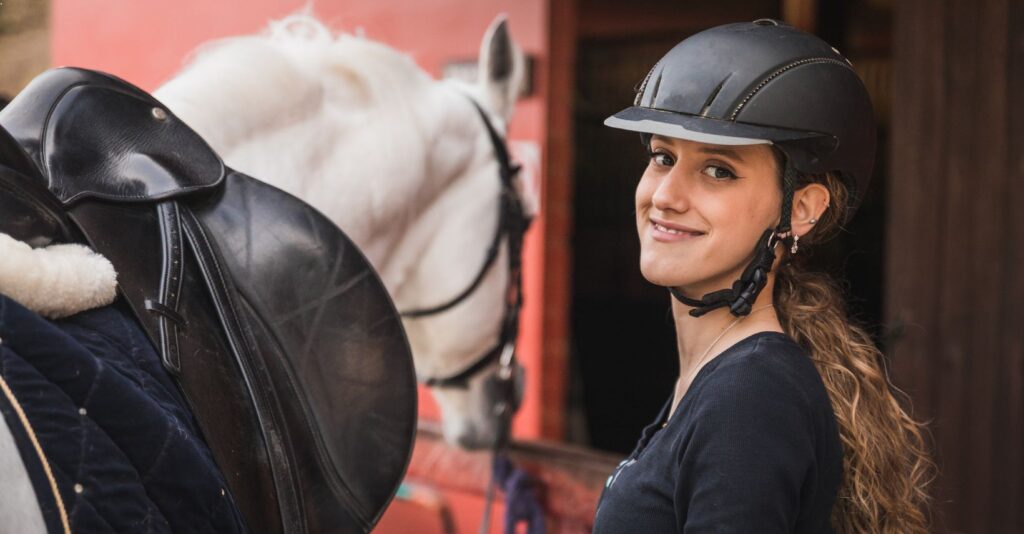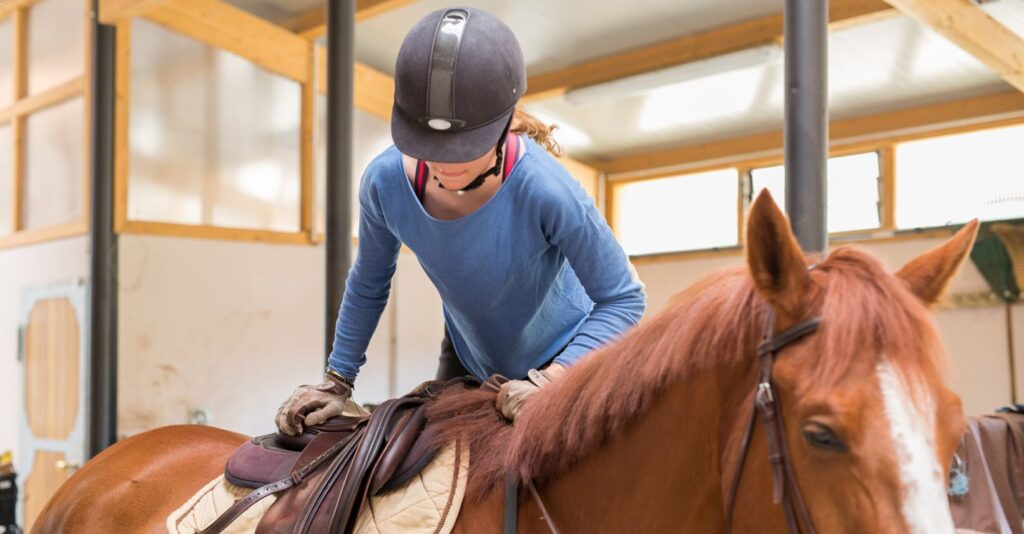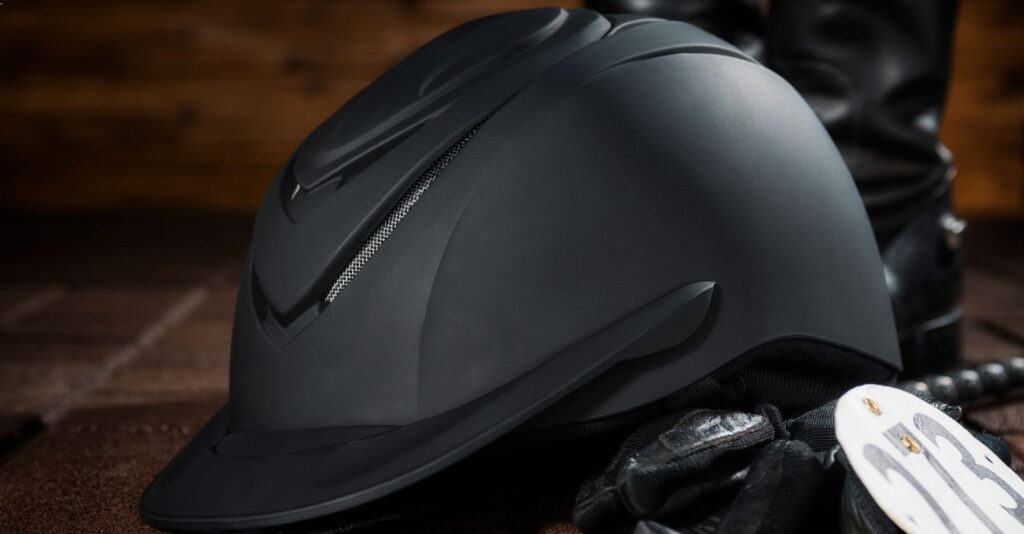Horseback Riding Helmet Guide
When it comes to horseback riding, safety should always be a top priority. One essential piece of equipment that every rider should have is a proper riding helmet.
In this comprehensive guide, we will explore the different types of horseback riding helmets, including traditional equestrian helmets, skull caps, and western riding helmets.
We will also discuss key features to look for in a helmet, such as certification, fit, ventilation, and weight. Discover why it is important to wear a certified helmet, how to properly fit a helmet, and how to maintain and replace your helmet.
Whether you are a beginner or a seasoned rider, this article will provide you with valuable information on the importance of wearing a properly fitted and certified horseback riding helmet.
What are the Different Types of Horseback Riding Helmets?
Various types of horseback riding helmets are designed to cater to different riding activities and preferences. The primary categories are Traditional Equestrian Helmets, Skull Caps, and Western Riding Helmets.

Traditional Equestrian Helmets
Traditional Equestrian Helmets are known for their classic design and sturdy construction. They are often created from high-quality materials like durable ABS plastic or fibreglass to meet stringent safety standards.
These helmets typically feature a protective outer shell of ABS plastic or fibreglass, providing excellent impact resistance. The interior lining is cushioned with EPS foam to absorb shock and enhance comfort.
When choosing an equestrian helmet, certifications such as ASTM or SEI should be considered to ensure it meets industry safety standards. Remember, regular inspection and adherence to a safety checklist are required. By doing so, you’re actively maintaining your helmet’s effectiveness in case of a fall.
Skull Caps
Skull Caps, also known as riding hats, offer a snug and comfortable fit that conforms closely to the shape of your head. This enhanced comfort and stability allow you to focus on your ride, knowing your helmet is secure and comfortable.
One of the key design features of these innovative helmets is their ability to offer a low-profile fit without compromising safety. The close-fitting design ensures the helmet stays securely in place, reducing the risk of shifting during movement. This snug fit enhances comfort and maximises safety by minimising the potential for helmet rotation in case of a fall or impact.
The lightweight construction of skull caps adds to their comfort levels, allowing riders to enjoy extended periods of wear without feeling weighed down or restricted. Riders often praise the breathable materials used in these helmets, which help regulate temperature and prevent excessive sweating during intense rides.
Western Riding Helmets
Western Riding Helmets boast a stylish broad brim and protect the rider’s face from the sun. These helmets are designed to maintain visibility and airflow, enhancing comfort during activities like trail riding and barrel racing.
Features such as adjustable chin straps and durable construction contribute to a secure fit and reliable protection. As riders consider these essential qualities, they might naturally think about other important characteristics of their safety gear.
Key Features to Look for in a Horseback Riding Helmet
When selecting a horseback riding helmet, key features include certification to safety standards, optimal fit for comfort and protection, effective ventilation to prevent overheating and a lightweight design for extended wear without strain.
Ensuring that the helmet you choose adheres to recognised safety standards is paramount for protecting against potential head injuries in the event of a fall or accident. A certified helmet has undergone rigorous testing to meet established safety requirements.
Proper helmet fit is also essential for both comfort and functionality. A too loose helmet may come off during a fall, while one that is too tight can cause discomfort and potentially cut off circulation. It should sit snugly on the head without being too tight or loose.
An effective ventilation system helps regulate temperature and maintain airflow, preventing the build-up of heat and moisture inside the helmet. This is important for ensuring comfort, especially during long rides or hot weather conditions.
Considering the helmet’s weight is equally important, as a heavy helmet can cause neck strain and discomfort over time. Opting for a lightweight design can greatly affect comfort and wearability, particularly for extended riding sessions.
Certification
Certification is important when choosing a riding helmet. It ensures compliance with established safety standards, providing riders with the confidence that the helmet offers adequate protection in case of falls or accidents.
Riders should look for several safety certifications when selecting a helmet. The ASTM F1163 standard, for instance, is one of the most widely recognised certifications in the equestrian industry. This standard covers various aspects such as impact testing, penetration resistance, and harness system strength, ensuring that helmets are thoroughly tested for different scenarios.
Another essential certification is the SEI (Safety Equipment Institute) certification, which indicates that the helmet has been independently tested and meets specific safety requirements.
In addition, helmets that comply with the VG1 standard are widely accepted in Europe, especially in horse riding competitions. These certifications not only guarantee the quality and durability of the helmet but also provide riders with peace of mind, knowing that their safety is prioritised.
Fit
Proper fit is essential for a riding helmet to ensure optimal protection and comfort. Riders should consider sizing and fitting guidelines, ensuring that the helmet shape matches their head contours for a secure and snug fit.
Measuring helmet size is the first step towards finding the right fit. Different manufacturers may have slightly varied sizing guides, so it’s important to refer to the specific brand’s measurements.
Fitting tips include making sure the helmet sits level on the head, with the front edge positioned just above the eyebrows. It should be snug but not tight, and the chin strap must be securely fastened.
Considerations for individuals with oval, round, or elongated head shapes exist, with some helmets designed to cater to these variations.
Ventilation
Effective ventilation is critical in a riding helmet to prevent heat build-up and discomfort during extended rides. Helmets with well-designed ventilation systems ensure proper airflow, keeping riders cool and focused.
Modern helmet manufacturers have introduced various innovative technologies to enhance ventilation. Some employ strategically placed vents to optimise airflow. In contrast, others incorporate channels that direct air over the head and through the back. Aerodynamic designs that focus on reducing wind resistance can further improve ventilation without compromising safety.
Weight
The weight of a riding helmet greatly influences a rider’s comfort and stamina. Lightweight helmets minimise neck and head strain, ensuring riders can concentrate fully on their ride without distraction.
Such comfort is essential for safety, bringing us to another critical aspect of riding gear: choosing a certified helmet. This choice could be the key to not just comfort but, crucially, survival in the event of an accident.
Why is it Important to Wear a Certified Helmet?

Wearing a certified riding helmet is essential for every rider’s safety. It ensures that the helmet adheres to the latest safety standards and offers strong protection against head injuries during horseback riding.
When choosing a helmet, prioritise those with certifications from respected organisations such as the SNELL Foundation or the American Society for Testing and Materials (ASTM), which confirm that the helmet has passed stringent safety tests.
A key feature of these helmets is their ability to efficiently absorb impact, thereby minimising the force reaching the rider’s head in the event of a fall.
Additionally, helmets that meet these standards often include adjustable straps and proper ventilation, ensuring a secure and comfortable fit during extended periods of use.
Adopting a certified helmet is an indispensable part of riding safely, shielding riders from severe head trauma. Once you’ve chosen your helmet, understanding how to adjust it to fit your head properly becomes the next step in ensuring maximum protection while riding.
How to Properly Fit a Horseback Riding Helmet?
Proper helmet fit requires safety and comfort. Riders can achieve a secure fit using a soft tape measure by measuring their head’s circumference at the widest point, typically just above the eyebrows.
This measurement should match the manufacturer’s sizing chart to select the appropriate helmet size. Adjusting the straps further personalised the fit, ensuring the helmet sits snugly and securely. As you consider the longevity and safety of your gear, it’s also worth noting the importance of regular maintenance and timely replacement of your horseback riding helmet to keep protection at its best.
How to Maintain and Replace Your Horseback Riding Helmet?

Regular maintenance and timely replacement of a horse riding helmet are essential for ensuring continued safety and performance.
Helmet care involves regular cleaning with mild soap and water to remove sweat, dirt, and oils that can degrade the materials.
Inspection is important to check for cracks, loose padding, or any damage compromising the helmet’s integrity. Proper storage away from direct sunlight and extreme temperatures helps prolong its lifespan.
An important aspect of helmet maintenance is knowing when to replace it. Look for signs of wear and tear, such as visible cracks, dents, or an expired riding helmet expiry date. If the helmet has been involved in a fall or impact, even if it looks fine, it might still need replacement due to unseen damage.
Regular Cleaning and Inspection
Regularly cleaning and inspecting a horse riding helmet are essential to maintain its integrity and safety features. Riders should follow manufacturer guidelines for cleaning, inspect for damages, and address any issues promptly.
Begin by removing dirt or debris from the helmet using a damp cloth and mild soap. Avoid harsh chemicals that could damage the helmet’s material.
Check the inner padding for wear and tear, ensuring it provides a snug and secure fit. Use a magnifying glass to closely examine the outer shell for cracks, dents, or scratches that may compromise its safety.
Ensure all buckles, straps, and fastenings are in good working condition to secure the helmet. Proper storage in a cool, dry place away from direct sunlight is required to prevent degradation and ensure the helmet remains effective for longer.
Knowing When to Replace Your Helmet
Understanding when to replace a horse riding helmet ensures ongoing safety and protection.
Signs such as visible physical damage, such as cracks, dents, or loose padding, can compromise the helmet’s structural integrity, making it less effective in the event of impact.
Keeping track of the riding helmet expiry date specified by the manufacturer is essential, as helmets can deteriorate over time and may provide a different level of protection than when new.
Compliance issues with safety certifications, such as ANSI or ASTM standards, should also prompt helmet replacement to guarantee optimal safety.
Regularly inspecting your helmet for signs of general wear and tear, like faded colours, worn straps, or a loose fit, can help you stay on top of maintenance and replacement needs.
Proper Storage and Handling
Proper storage and handling of a horse riding helmet are essential to preserve its quality and protective properties. Riders can enhance longevity by storing the helmet in a cool, dry place and avoiding exposure to direct sunlight or extreme temperatures.
Plus, it’s important to regularly inspect the helmet for any signs of wear or damage for storage considerations. Ensure the helmet is protected from any chemicals or cleaning agents that could degrade its materials.
Use a protective carrying case to prevent scratches or dents when transporting the helmet. Consider investing in helmet customisation options such as fitted padding or chin straps to ensure maximum comfort and safety. Explore different helmet accessories like visors or helmet covers to add a personal touch while providing protection.
